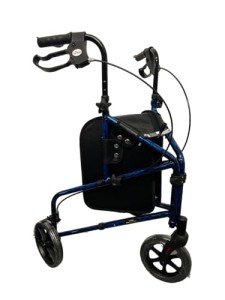mobility-aid6296
mobility-aid6296
Walker With Wheels Tools To Improve Your Daily Life Walker With Wheels Trick That Everybody Should Learn
Walker With Wheels: Revolutionizing Mobility for Enhanced Independence
Introduction
For people experiencing mobility obstacles, walkers have long been a trusted aid, supplying stability and assistance. The intro of walkers with wheels has transformed the landscape of assisted mobility, using users greater self-reliance and liberty. This post checks out the benefits, types, functions, and factors to consider surrounding walkers with wheels, gearing up readers with essential understanding to make educated choices.
The Advantages of Walkers with Wheels
Increased Mobility
Walkers with wheels allow for smoother movement. The wheels supply boosted maneuverability, making it possible for users to browse different terrains, both indoors and outdoors, with ease. This feature reduces the exertion associated with walking, making it a suitable alternative for people recovering from surgery, elderly patients, or those with persistent conditions.
Enhanced Stability
Numerous walkers with wheels come geared up with built-in brakes that offer users with a sense of security. When fixed, users can engage the brakes, avoiding the walker from rolling away unintentionally. This feature makes walkers with wheels much safer, particularly when navigating irregular surface areas or stepping aside to enable others to pass.
Functional Design
Improvements in design have caused walkers with wheels that deal with a broader range of needs. Some models come with extra functions, such as seats for resting, storage compartments for personal products, and ergonomic grips that decrease strain on the hands.
Types of Walkers with Wheels
When choosing a Walker With Wheels; https://Git.17pkmj.com,, factor to consider of specific needs is key. The following prevail types of walkers with wheels:
| Type | Description | Perfect For |
|---|---|---|
| Two-Wheeled Walker | Functions wheels just in the front, providing support from the back. | Those who require more assistance for balance. |
| Four-Wheeled Walker | Comes geared up with wheels on all four legs, permitting higher maneuverability. | People seeking more self-reliance and dexterity. |
| Rollator Walker | A kind of four-wheeled walker with a built-in seat and storage. | Users requiring to take breaks and carry personal items. |
| Heavy-Duty Walker | Designed for people with greater weight capacities. | People needing additional durability and assistance. |
Secret Features to Consider
When exploring alternatives, potential users need to think about the following functions:
-
Weight Capacity: Each walker has actually a defined weight limitation. Ensure that the chosen design supports the user’s weight conveniently.
-
Adjustable Height: Select a walker with an adjustable height feature to guarantee optimal posture and convenience for the user.
-
Brakes: Look for walkers with user friendly brakes that lock when the user stops.
-
Storage Options: Walkers with compartments or baskets provide useful solutions for carrying individual products.
-
Foldability: Many walkers fold for easy transportation and storage, an important function for users who often travel or visit places.
-
Ergonomic Grips: Comfortable grips minimize hand fatigue during use, improving the walking experience.
Regularly Asked Questions (FAQs)
1. Are walkers with wheels ideal for outdoor use?
Yes, many walkers with wheels are created to handle numerous terrains. Nevertheless, it is vital to choose a model with bigger wheels and proper tread for outdoor use to guarantee stability and safety.
2. How do I choose which kind of walker with wheels is best for me?
Consider your mobility needs, living environment, and individual preferences. Consulting with a healthcare specialist can offer tailored suggestions based upon your scenario.
3. Can I change the height of my walker?
A lot of modern walkers with wheels featured adjustable height settings. Constantly follow the maker’s instructions to ensure a secure adjustment for your convenience.
4. How do I preserve my walker with wheels?
Regularly examine the brakes, wheels, and total structure for wear and tear. Tidy the walker with mild soap and water to preserve health, especially if utilized outdoors.
5. Exist walkers with wheels created specifically for users with specials needs?
Yes, particular models accommodate special requirements, such as wider frames, strengthened deals with, or additional helpful functions like grips or back-rests. Highlighting individual requirements will assist in choosing the best item.
Walkers with wheels represent a significant advancement in mobility assistance, allowing users to keep independence and improve their lifestyle. With many options offered, understanding the numerous types, features, and benefits of these walkers is vital for people seeking one that satisfies their requirements. By purchasing the right walker, users can navigate their environments with self-confidence, making sure a more active and satisfying lifestyle.

Final Thoughts
As we move towards a more inclusive world, the mobility aids offered, like walkers with wheels, continue to adapt and develop. It is essential for users, caregivers, and healthcare experts to remain informed about the most recent designs and features to make sure that mobility help works, safe, and user-friendly.
In summary, walkers with wheels not just offer assistance; they empower people to reclaim their self-reliance, giving them the liberty to engage with the world around them.




